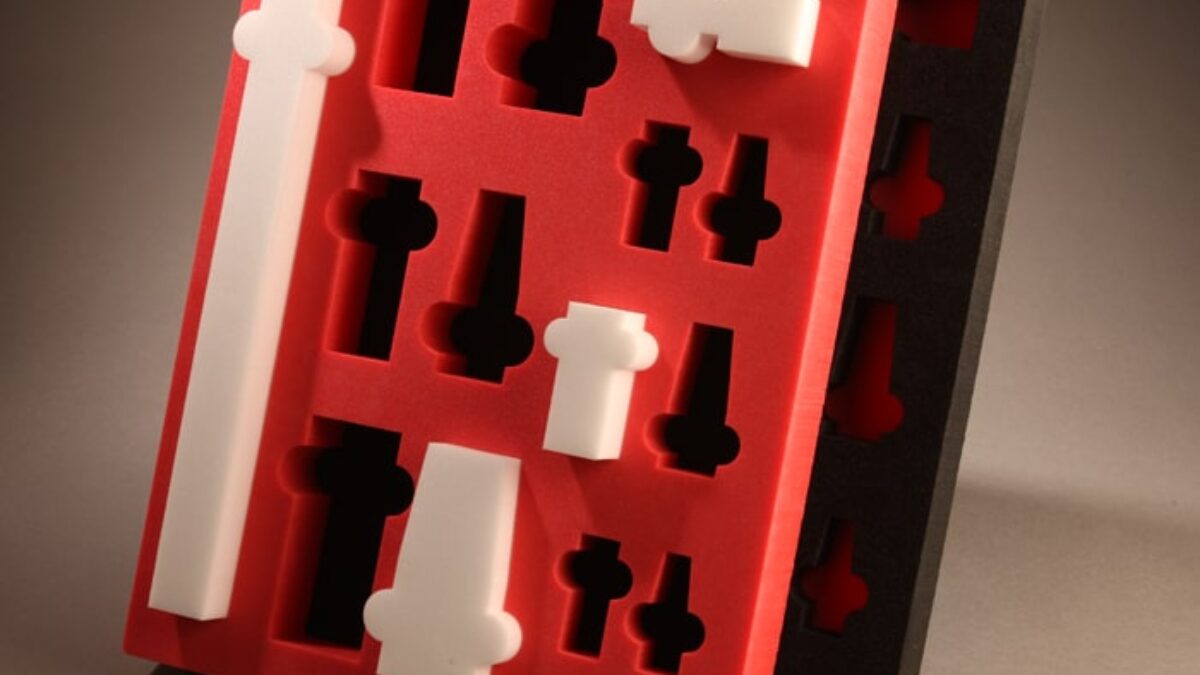Die cutting is one of the quintessential foam fabrication capabilities. You have a piece of foam, and you need it cut down to a particular size or shape. It’s simple, but that’s not all there is to foam cutting techniques. What if you want a piece of foam to surround an object? How do you cut out custom shapes into the foam so that it can be used as a complete, 360-degree protection in a foam packaging application?
That’s where die cutting and kiss cutting come into the picture.
Both of these types of foam fabrication techniques allow custom tools to cut specific shapes into a piece of foam, allowing it to be used as a comprehensive protective packaging for the storage and shipping applications. These shapes can be intricate and completely custom—you’re not limited to simple geometric shapes. If you have a custom part, it can be measured, a custom tool can be created, and that shape can be cut into the piece of foam. Once this custom tool is created, fabricating these parts becomes incredibly cost efficient, making both die cutting and kiss cutting incredibly cost-efficient methods of producing large numbers of custom foam parts.
What exactly is the difference between die cutting and kiss cutting? It all comes down to how deep the cuts are made into the piece of foam.
What is Die Cutting?
Die cutting is the process of using a custom tool (known as a die) to cut through a piece of foam and any backing material in order to create a custom cut-out shape based on your dimensions and design specifications. Die cutting provides clean, precise cuts to nearly any foam material.
The many types of die cutting include:
- Rotary die cutting
- Laser die cutting
- Flatbed die cutting
- Waterjet cutting
What is Kiss Cutting?
Kiss cutting uses similar tools and a similar process to die cutting, with the major difference being that the cut made into the piece of foam does not pass all the way through the material. Kiss cutting only removes the top layer or layers of material, creating a custom shape that is cut into (rather than through) the piece of foam. Fabricators can set the depth of a kiss cut, creating an additional dimension that is customizable based on the item that needs to be protected. This is especially useful if you need to preserve the integrity of the backing of a piece of material.
There are many types of kiss cutting, including:
- Laser kiss cutting
- Plotter kiss cutting
- CNC routing
- Clamshell kiss cutting
- Thermal kiss cutting
Which is Right for Your Application?
There are no “hard and fast” rules for whether to use die cutting or kiss cutting to fabricate foam for your application. It heavily depends on the use of the custom foam, and the products being protected. Thankfully, it’s not your job to know which is right. That’s our job. At Amcon, we help you fabricate the foam parts you need, using one or many of the fabrication techniques we have at our disposal. We can help you get the parts you need, when you need them.
Get in touch with our team today to start working on your next foam project.


